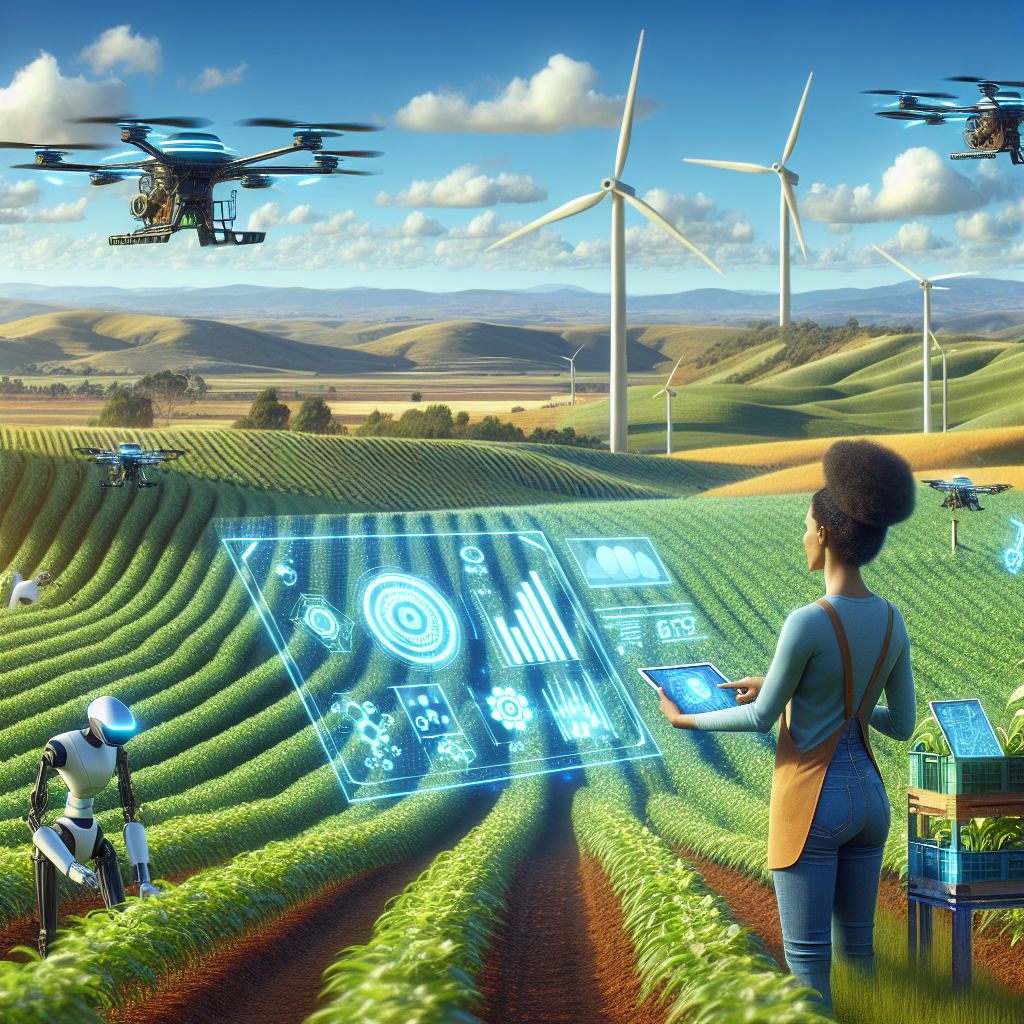In recent years, there has been a growing interest in the use of artificial intelligence (AI) in various industries, including agriculture. AI-driven solutions have the potential to revolutionize the way we grow and harvest crops, manage livestock, and optimize farming practices. From increasing crop yields to reducing the use of pesticides, AI has the potential to transform the agricultural industry in significant ways.
One of the key benefits of AI-driven solutions for smart agriculture is the ability to collect and analyze large volumes of data in real-time. By using sensors, drones, and other IoT devices, farmers can gather data on soil quality, weather conditions, crop health, and more. AI algorithms can then analyze this data to provide valuable insights and recommendations to farmers. For example, AI can help farmers make informed decisions about when to plant, irrigate, and harvest crops based on real-time data.
Another benefit of AI-driven solutions is the ability to optimize resource usage. By using AI algorithms to analyze data on soil moisture levels, crop health, and weather patterns, farmers can optimize irrigation schedules to reduce water waste and increase crop yields. AI can also help farmers optimize the use of pesticides and fertilizers, reducing costs and environmental impact.
AI-driven solutions can also help farmers improve crop yields and quality. By analyzing data on soil quality, weather conditions, and crop health, AI algorithms can provide recommendations for improving farming practices. For example, AI can help farmers identify nutrient deficiencies in the soil and recommend the appropriate fertilizers to use. AI can also help farmers detect pests and diseases early, allowing for timely intervention to prevent crop damage.
In addition to improving crop yields, AI-driven solutions can also help farmers reduce labor costs and increase efficiency. By automating tasks such as planting, irrigating, and harvesting, AI can help farmers save time and resources. For example, AI-driven robots can plant seeds at precise depths and spacing, reducing the need for manual labor. AI can also help farmers monitor and manage livestock more effectively, improving animal health and productivity.
Overall, the benefits of AI-driven solutions for smart agriculture are numerous. From increasing crop yields to reducing resource usage and labor costs, AI has the potential to revolutionize the way we grow and harvest food. As the agricultural industry continues to face challenges such as climate change, population growth, and the need for sustainable farming practices, AI-driven solutions offer a promising way forward.
FAQs:
1. What is AI-driven smart agriculture?
AI-driven smart agriculture refers to the use of artificial intelligence (AI) technologies to optimize farming practices and increase crop yields. By using AI algorithms to analyze data on soil quality, weather conditions, crop health, and more, farmers can make informed decisions about when to plant, irrigate, and harvest crops.
2. How can AI help farmers increase crop yields?
AI can help farmers increase crop yields by providing insights and recommendations based on data analysis. By analyzing data on soil moisture levels, weather patterns, and crop health, AI algorithms can help farmers optimize irrigation schedules, detect pests and diseases early, and improve farming practices to increase crop yields.
3. How can AI help farmers reduce resource usage?
AI can help farmers reduce resource usage by optimizing the use of water, pesticides, and fertilizers. By analyzing data on soil quality, weather conditions, and crop health, AI algorithms can provide recommendations for reducing water waste, using pesticides and fertilizers more efficiently, and minimizing environmental impact.
4. What are some examples of AI-driven solutions for smart agriculture?
Some examples of AI-driven solutions for smart agriculture include sensors and IoT devices for collecting data, drones for monitoring crops, and AI algorithms for analyzing data and providing recommendations to farmers. AI-driven robots can also automate tasks such as planting, irrigating, and harvesting, reducing labor costs and increasing efficiency.
5. What are the benefits of AI-driven solutions for smart agriculture?
The benefits of AI-driven solutions for smart agriculture include increased crop yields, reduced resource usage, improved crop quality, and decreased labor costs. By using AI technologies to collect and analyze data, farmers can make informed decisions about farming practices and optimize resource usage to improve productivity and sustainability.

